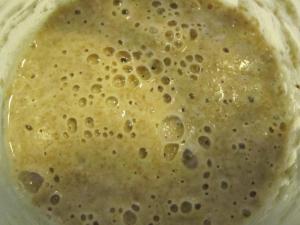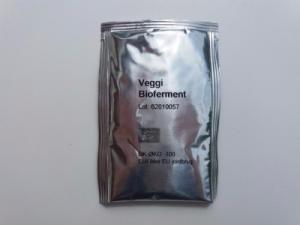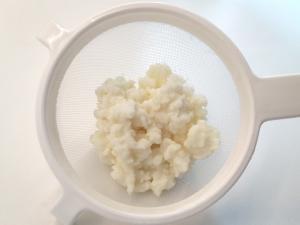Webshop
My page
 See Product Group See Product Group
|
Read more about Bread |
Add to cart
|
|
|
|
|
Preferment from Aurion is based on mix on wheat, corn and peaflour, honey and water that has fermented, dried and ground in to granules.
Pre-ferment differs from regular yeast products in containing a special type of lactic acid bacteria (Pediococcus pentosaceus) and wild yeast. Pre-ferment is not unlike sourdough but has its own unique profile because of the lactic acid bacteria.
Baking with pre-ferment is slightly more difficult than baking with regular yeast because you have to make a pre-dough in order activate the yeast - however your effeorts are greatly rewarded with a delicious bread with nice flavouring, longer shelf life and better nutritional value.
Preferment works best when making wheat breads from species such as spelt (dinkel wheat), emmer wheat, giant durum (kamut) and einkorn but it will work on other types of breads too, such as rye-bread.
Below is a detailed step-by-step description of the process when baking with pre-ferment :
The basic dough - Step 1: (Day 1, for example. At 8:00 am)
Mix 1.2 dl water (35°C) with 50 g graham flour or spelt flour and 20 g baking-ferment - the texture should be like thin porridge.
Leave at 25-30° C until the next day, possibly on top of a refrigerator or somewhere warm.
The basic dough - Step 2: (Day 2, for example. At 8:00 am)
Mix 2 dl water (30°C) with 130 g of grahams or spelt flour to a very tough dough.
Add the now slightly acidic basic dough - mix well and make sure to whip air into the dough.
Leave at 25-30°C for 5-10 hours until the dough has risen and it smells slightly sour.
The basic dough is now ready for making a pre-dough.
You only need to use a small portion of the basic dough for the pre-dough - the rest can be put in the refrigerator in a half-empty glass (otherwise the dough will grow out of the glass). It can be stored for up to 2 months this way and still maintain its activity, however the younger the better it is. You may notice a little bit of dark fluid forming on the surface the basic dough, but it is of no harm – discard this fluid and stir the dough before use. The basic dough has to be refreshed from Step 2 before it is ready again.
Pre-dough - Prepare 12-14 hours before needing it for your actual bread dough (Day 2, for example. Kl. 15:00) :
Mix 2½ cups water (37°C) with 175 g grahams flour or spelt flour and mix it in to a soft dough.
Add ½ -1 tablespoon of basic dough and stir/whip air into the dough. It is important that the pre-dough has the same soft texture as the basic dough.
Leave at 25°C for 12-14 hours (e.g. overnight).
Bread dough - Day 3 (e.g. at 08:00)
The pre-dough is now ready in the morning on day 3. It can be used for many different types of bread. Below is the recipe for Aurions Graham Bread, but make your own variations to if u prefer to use other types of flour, grains or seeds.
ALWAYS remember to mix the dough in the following order; water, half flour, salt, pre-dough before adding the rest of the flour. Adding ingredients in this order will prevent you from killing off the crucial microorganisms with hot water and many mistakes are avoided using this procedure.
Pre-ferment can even be combined and used with ordinary yeast. Use 10 g of yeast per 1 liter of water and the dough will rise nearly as fast as regular yeast dough, but the bread will still be superior i taste and quality.
Aurions Graham Bread - 3 pieces.
7½ cups water (37°C)
approx. 1.4 kg flour (whole-flour)
20 g salt
1 portion af pre-ferment - pre-dough
Possibly. seeds / grains like poppy seeds or pumpkin seeds
Mix the water with half of the flour.
Add salt and pre-dough.
Knead the remaining flour into the dough.
Let the dough rest for 1-2 hours at a lukewarm place (autolysis - gluten network is built).
You can now let the dough rest, or every 1-3 hours work it by stretching and folding without adding more flour. You will notice the dough will gain more elasticity as you stretch and fold the dough.
Divide the dough into 3 parts, roll it and sprinkle it with seeds if desired and leave to rise in a flour-coated raising basket, some place warm. The dough can also be left to rise in a baking tins.
After about 2 hours of rising, bake the bread at 220°C until it turns golden. You can use a baking thermometer to measure the crust temperature. It must be at least 98°C. Do not be afraid to bake it so long that the crust hardens - it is very important for texture and shelf life the bread is thouroughly baked.
|
Loading...
|
|
|


















































































































































































 In stock
In stock 


 3/9
- Visitors: 1502195 - 1
3/9
- Visitors: 1502195 - 1